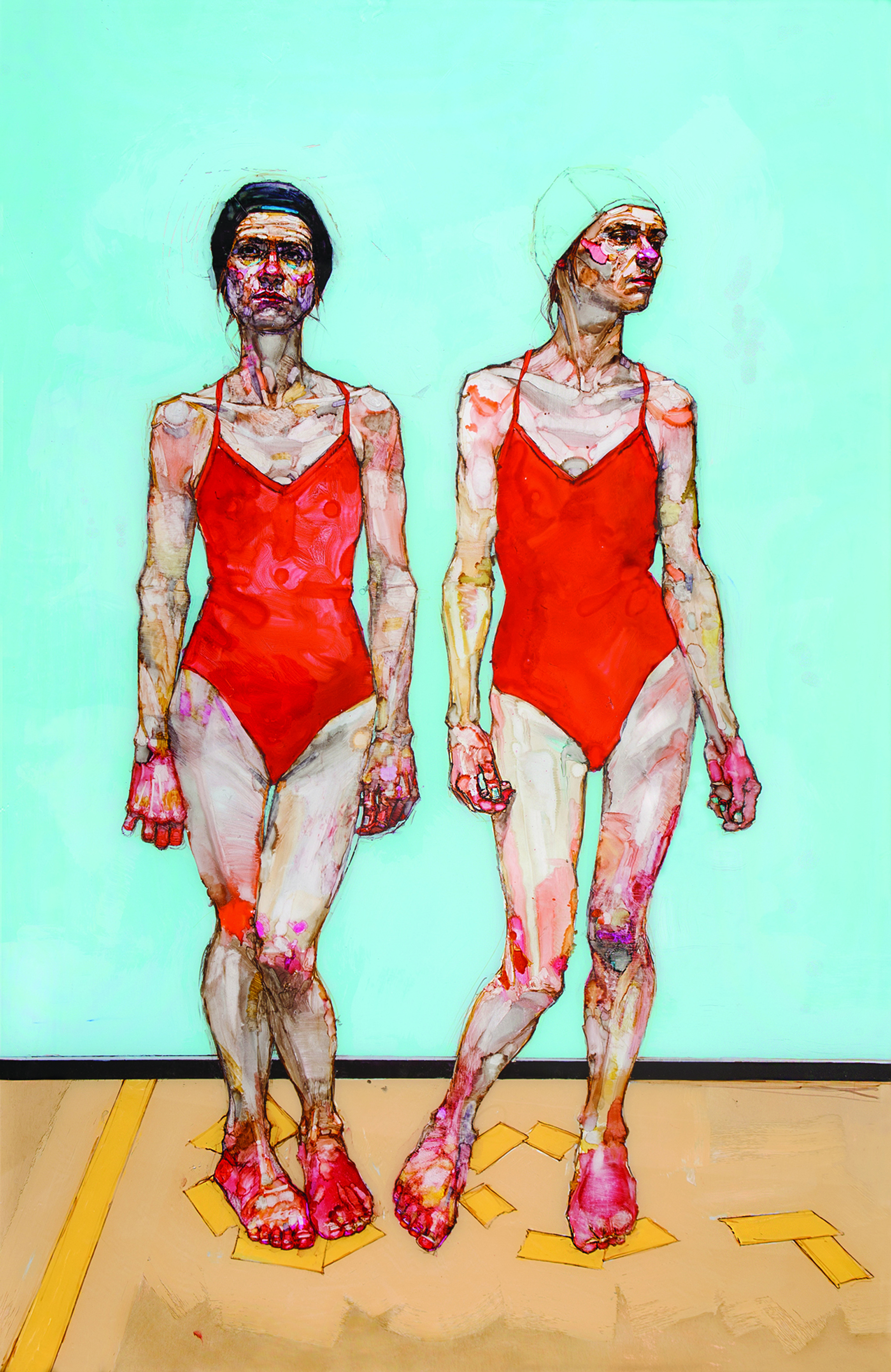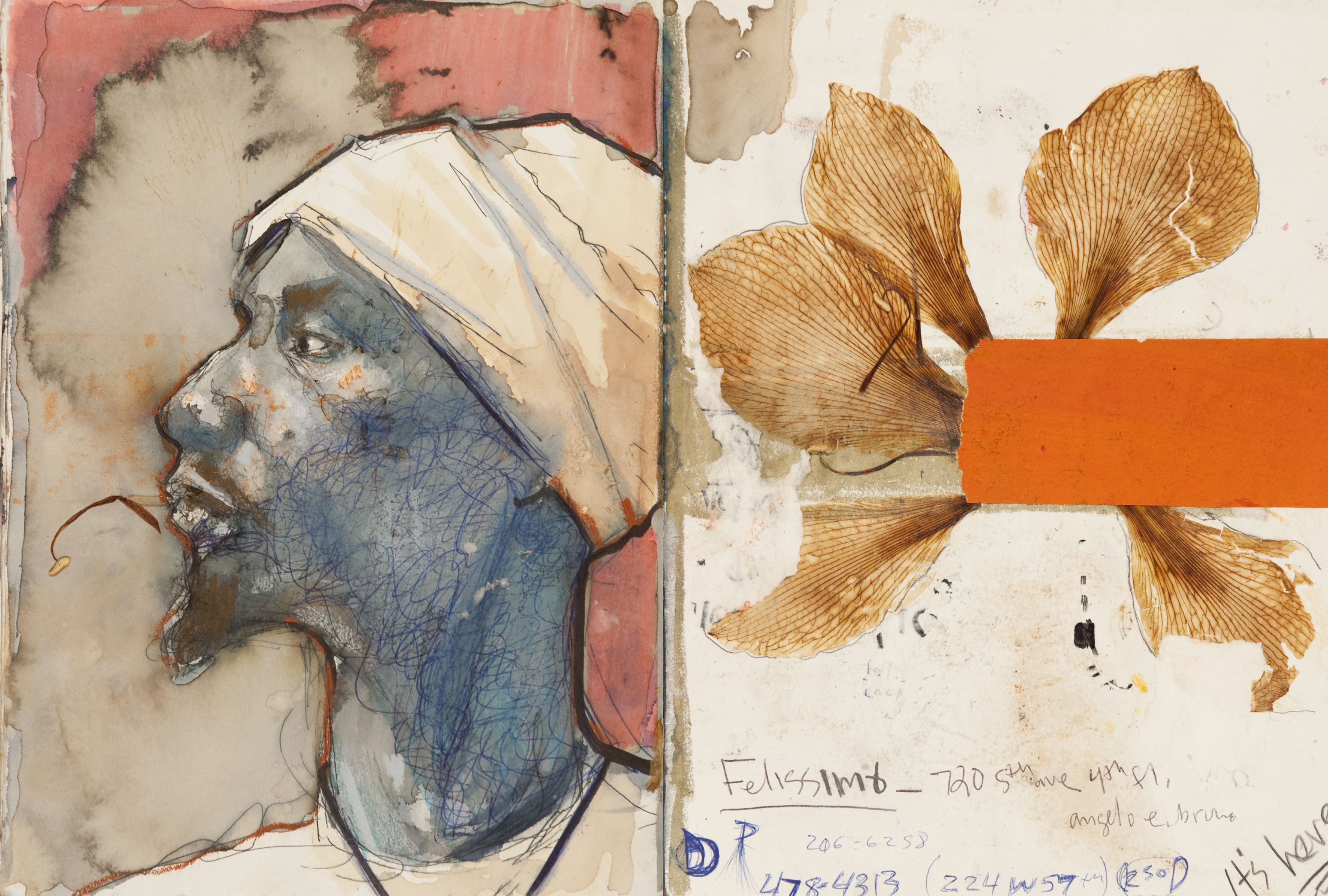À la fin du xixè siècle le peintre américain Whistler installé à Paris, ami d’Oscar Wilde était réputé pour ses bons mots et son esprit acéré. «L’art de se faire des ennemis», réponse au critique d’art John Ruskin qui avait qualifié son «Nocturne en noir et or» d’un «pot de peinture jeté à la face du public» est passé à la postérité. Whistler, qui fut reconnu dans le monde entier de son vivant, était un peintre particulièrement raffiné pour lequel l’harmonie des couleurs avait une telle importance qu’il est unanimement considéré comme l’un des précurseurs de l’impressionnisme voire de l’art abstrait.
Cet épanouissement chromatique le rapproche de l’un de ses compatriotes, John Singer Sargent dont l’admirable portrait «Madame X» déclencha un scandale au Salon des Beaux Arts de Paris en 1884.
En 2008 Laurence Esnol a ouvert deux superbes galeries de peinture à Saint-Germain des Prés. Son aventure, par le romanesque qui la traverse, pourrait inspirer un scénariste. Le drame et l’exaltation sont au cœur de son épopée.
Tout commence par une rencontre. Un livre, un objet peuvent décider d’un destin. Pour elle ce sera une image, plus exactement un tableau d’un peintre inconnu, «La fille au complet rouge» (Girl with red suit).
Le drame c’est la disparition d’une mère dans des circonstances tragiques, l’exaltation ce sera la rencontre avec ce tableau aux vertus balsamiques et avec son auteur, H. Craig Hanna.
Laurence Esnol ne se destinait pas à devenir galeriste. Aujourd’hui encore elle ne se reconnaît pas dans ce mot, ni dans l’esprit affairiste d’un monde de l’art qu’elle observe sans concession et qui ne s’est pas empressé de l’accepter. Car ses préférences vont plutôt vers ces hérauts de l’art que furent les Castelli, Ernst Beyeler ou René Gimpel dont le goût et la vision, intimement mêlés, faisaient d’eux des marchands d’exception tout autant que des mécènes. Éloignée de sa dilection première, la mode, elle s’est lancée dans la bataille de l’art avec un peintre séparé de sa terre natale comme le fut naguère Le Caravage, son maître ancien préféré.
Michelangelo Merisi dit Le Caravage s’exila un temps, suite à un duel tragique, à Malte, terre sur laquelle séjournera aussi H. Craig Hanna. Pour ceux investis d’une mission il y aura toujours des signes prêts à la justifier.
Après avoir correspondu plusieurs mois avec le peintre, celle qui n’est encore qu’une bienveillante admiratrice est là pour l’assister lors d’une exposition de la Cynthia Corbett Gallery à New-York. Sur la simple idée de présenter les tableaux sur un fond orange, le résultat dépassera toutes les espérances, puisque la presque totalité des œuvres sera vendue.
Une palpitante et vibrante énergie parcours cette peinture contemporaine. Nourri à l’exaltation des génies de la lumière, Le Titien, Velasquez et Rembrandt, maîtres du clair-obscur qui ont inspiré Whistler et Sargent, H. Craig Hanna réalise des tableaux dont la couleur procure une jouissance autant érotique que spirituelle. La singularité de son style lui fait rejoindre le cercle de ses illustres et subtils compatriotes, installés dans une ville qui n’a jamais renoncé à voir un retour de la peinture.
«Paris ne finit jamais» dit l’écrivain et essayiste espagnol Enrique Vila-Matas. La peinture de Craig Hanna non plus. Elle ne cesse de regarder au loin. D’une fille au complet rouge aux cieux ultramarins, l’exil est la sève des grandes épopées.
Cyril A. Skinazy
Craig Hanna
Girl with red suit, an American adventure
The American artist James Abbott McNeill Whistler moved to Paris at the end of the 19th century. He was a friend of Oscar Wild and well known for his sharp mind and witty speech. “The art of making enemies”, his response to art critic John Ruskin who had called Whistler’s painting “Nocturne in Black and Gold—The Falling Rocket” a “bucket of paint thrown at the public’s face” has become legendary in the history of art criticism. Whistler, who became famous around the world while still alive, was a particularly refined painter for whom the harmony of colors was so important that he was unanimously considered one of the precursors of impressionism, or even abstract art.
The growth and flourish in his use of color leads one to compare him to another American artist of the time, John Singer Sargent, whose impressive “Portrait of Madame X” caused a scandal at the Salon of Fine Arts in Paris in 1884.
Laurence Esnol has opened two wonderful art galleries in the Saint-Germain des Prés quarter of Paris. So many aspects of her life are worthy of a novel and could inspire many a playwright; drama and excitement are at the heart of her story.
It all began with a meeting. A book, or something else that could decide one’s fate. For her it would be a picture or more exactly, a painting by an unknown artist, “Girl with red suit” («La fille au complet rouge»).
The tragedy was the death of a mother in dreadful circumstances, getting over it was coming across a painting with soothing qualities, and meeting its creator, H. Craig Hanna.
Laurence Esnol was not destined to become a gallery owner. Even today she doesn’t consider that she fits this description; neither in the business-minded art world that she looks upon without concession, and which she is in no hurry to accept. Because her preferences go more towards the heralds of art: Castelli, Ernst Beyeler and René Gimpel, whose taste and vision, finely entwined, made them exceptional merchants as much as philanthropists.
Pushed away from fashion, her first great interest, she threw herself in to the battles of art with a painter separated from his native land as was Caravaggio, her favorite master of all time. Michelangelo Merisi o Amerighi da Caravaggio had exiled himself for a while after a tragic duel in Malta, where H. Craig Hanna had also stayed. Those who have been given a mission will always have signs to justify it.
After having written back and forth with the painter, she who was only still a well-wishing admirer was at his side, going to the show at the Cynthia Corbett Gallery in New York. With just the simple idea of hanging paintings on an orange background, the results went beyond any hopes, and almost all the works were sold.
A palpitating and vibrant energy runs through this body of modern art. Brought to a fever pitch by the geniuses of light, Titian, Velázquez and Rembrandt, masters of chiaroscuro that inspired Whistler and Sargent, H. Craig Hanna makes paintings whose color brings joy, whether it be erotic or spiritual. The uniqueness of his style brings him back in the circle of his famous and lesser-known fellow countrymen, who live in a city that has never given up on seeing painting come back.
There’s “Never any end to Paris” said the Spanish writer Enrique Vila-Matas; there’s never any end to Craig Hanna’s painting either. They keep you looking off in the distance. From a girl with red suit to deep cobalt-blue skies, exile is the seed of the greatest of escapes.
—Cyril A. Skinazy


